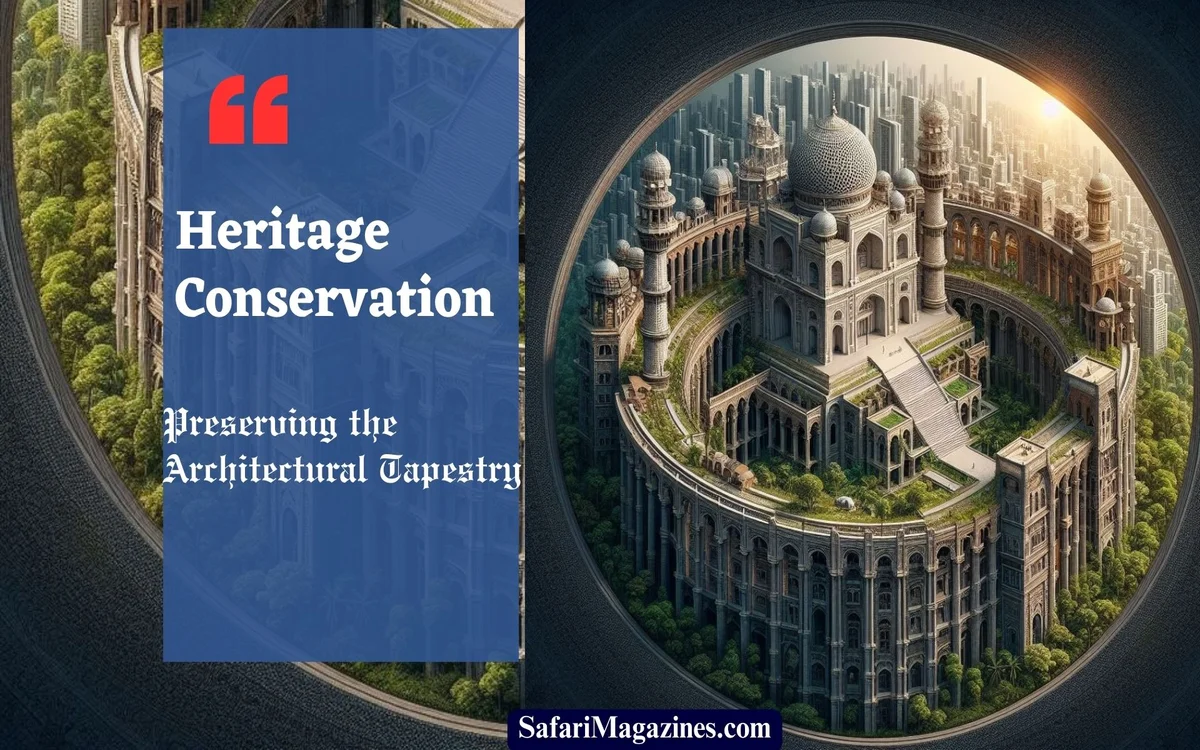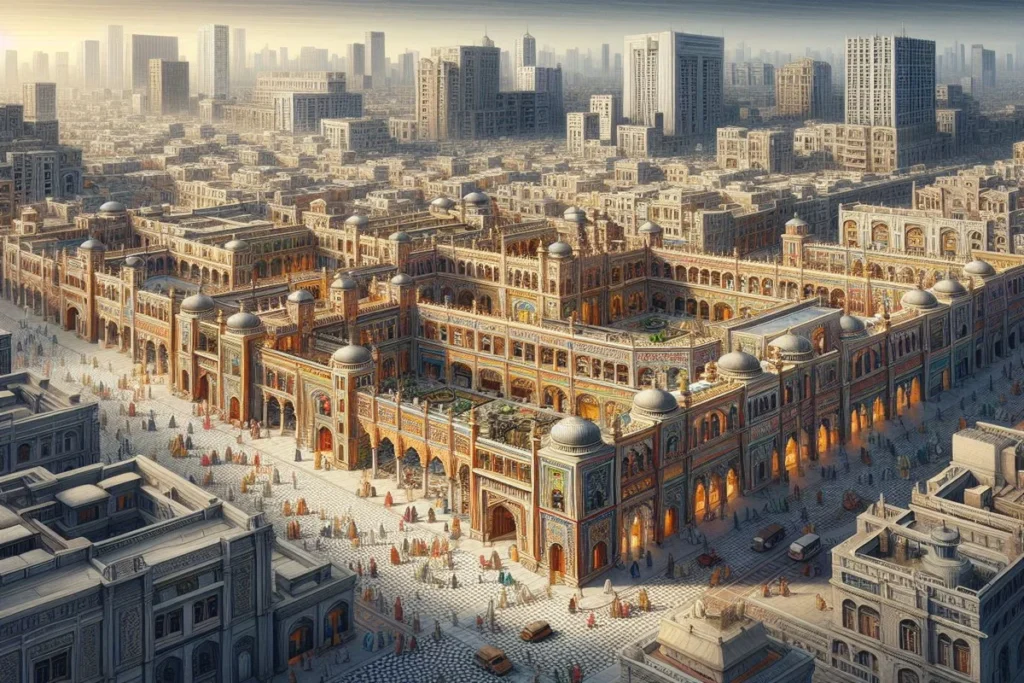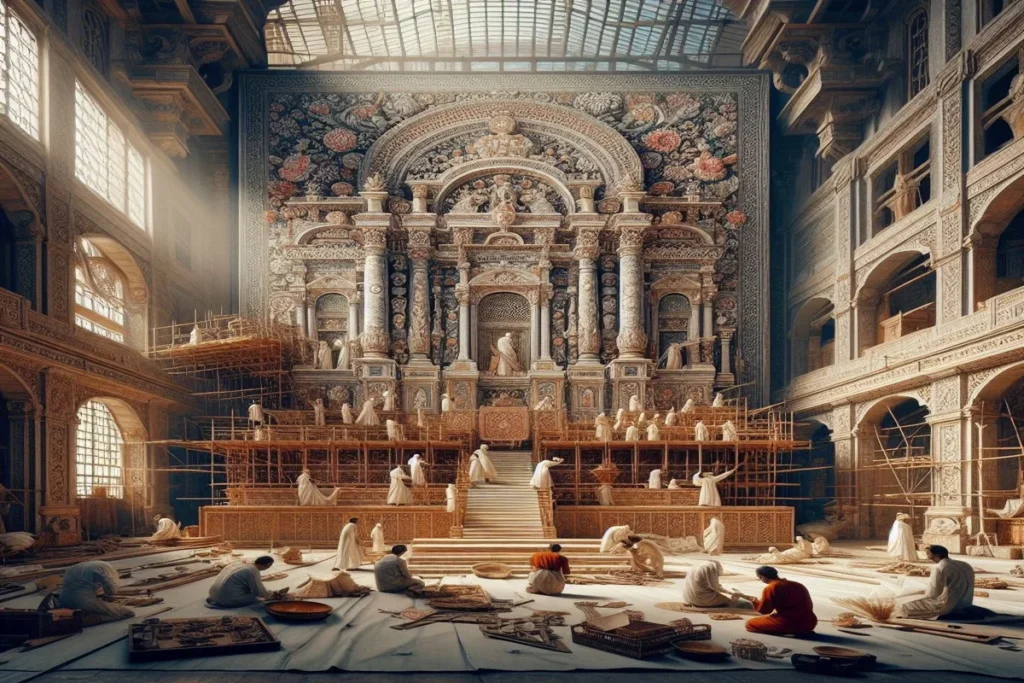
Heritage Conservation, Preserving the Architectural Tapestry. Preserving our cultural and architectural heritage is not just an obligation; it is a commitment to protecting the essence of our collective history. In a rapidly changing world, the need to conserve the architectural tapestry becomes even more crucial.
Table of Contents
ToggleUnderstanding Heritage Conservation
Heritage conservation is a multidimensional effort encompassing cultural, historical, and architectural aspects. It involves the protection and preservation of structures, sites, and artifacts that hold historical significance. So, this goes beyond maintaining physical structures; it’s about safeguarding the stories embedded in the walls and streets.
Challenges in Heritage Conservation
While recognizing the importance of heritage conservation, various challenges persist. Urbanization and development pressures often clash with the need to preserve historical sites. The lack of awareness and funding further complicates the matter, making it imperative to address these issues for effective conservation.
Key Principles of Heritage Conservation
Preservation and restoration are two distinct approaches in heritage conservation. So, it is important to achieve a balance between these methods.. Additionally, involving the community in decision-making processes ensures a holistic and sustainable conservation effort.
Case Studies: Successful Heritage Conservation Projects
Examining successful heritage conservation projects provides valuable insights. The meticulous restoration of [Specific Historical Site] showcases the transformative power of dedicated efforts. Similarly, [Another Case Study] demonstrates the positive impact on communities and cultural identity.
Architectural Styles and Periods: A Walk Through History

Understanding different architectural styles and periods is fundamental to heritage conservation. So, from Gothic and Baroque to Modernist designs, each style reflects a specific era and cultural context. Recognizing these styles is essential for effective conservation strategies.
Continue reading: Heritage Conservation: Preserving the Architectural Tapestry.
Innovations in Heritage Conservation Technologies
Advancements in technology play a pivotal role in heritage conservation. For example, digital documentation, 3D mapping, and sustainable restoration practices ensure accurate preservation and minimal environmental impact. Embracing these innovations contributes to the longevity of historical sites.
Impact of Heritage Conservation on Tourism
Preserved historical sites have the potential to become cultural tourism attractions. This not only boosts the local economy but also fosters a deeper appreciation for heritage. Balancing conservation efforts with tourism benefits is key to ensuring sustainable growth.
The Heroes of Heritage Conservation
Architectural Conservationists: Guardians of the Past
Picture this – caped crusaders armed not with swords, but blueprints. Architectural conservationists are the unsung heroes, devoting their lives to safeguarding the essence of our urban areas, brick by brick.
Community Involvement: A Collective Effort
Preserving our architectural tapestry isn’t a solitary endeavor. It’s a community affair. When communities actively participate in conservation efforts, the impact is not just on the buildings but on the collective spirit of the people. So, Engaging local communities is integral to successful heritage conservation. Awareness programs, educational initiatives, and active community participation create a sense of ownership and pride in preserving cultural heritage.
Continue reading: Heritage Conservation: Preserving the Architectural Tapestry.
Government Policies and Initiatives
Governments play a crucial role in heritage conservation through legal frameworks and incentives. So, establishing clear policies for heritage protection and supporting conservation initiatives financially encourages collective responsibility.
Future Trends in Heritage Conservation
The future of heritage conservation holds exciting possibilities. Technological advancements, global collaborations, and evolving best practices indicate a positive trajectory. Staying abreast of these trends ensures adaptive and effective conservation strategies.
Preserving Intangible Heritage: Traditions and Stories

Beyond physical structures, intangible heritage like oral histories and cultural practices are equally vital. Passing down these traditions ensures a holistic approach to conservation, maintaining the essence of cultural identity.
Sustainable Practices in Heritage Conservation
Incorporating sustainable practices in conservation efforts is imperative. Using eco-friendly restoration materials and considering environmental impacts ensure that the preservation process aligns with broader sustainability goals.
Continue reading: Heritage Conservation: Preserving the Architectural Tapestry.
Challenges in Balancing Development and Conservation
Finding a middle ground between development and conservation remains a persistent challenge. Sustainable urban planning and thoughtful consideration of historical sites in development projects are essential for harmonizing progress with preservation.
Weathering the Storms of Time
Preserving ancient structures isn’t a stroll in the architectural park. These buildings face the onslaught of time, weather, and neglect. It’s a battle to ensure that our architectural marvels stand tall against the ravages of decay.
Striking a Balance: Preservation vs. Modernization
Conservation efforts sometimes spark a debate – how much modernization is too much? Striking the right balance is an art, ensuring that while we adapt buildings for contemporary use, we don’t erase the footprints of history.
Read more:
- Pilgrimage places in the world: Journey to the Divine
- Exploring Historic Palestine: Archaeological and Tourist Sites
- Traditional Building Techniques’ Secrets
Summary of Heritage Conservation
In conclusion, heritage conservation is not a solitary endeavor but a collective responsibility. Recognizing the significance of our architectural tapestry and actively participating in its preservation ensures a rich and meaningful legacy for future generations
FAQs about Heritage Conservation
Q1: Is heritage conservation only about preserving physical structures?
A1: No, heritage conservation goes beyond structures; it includes protecting the stories, traditions, and intangible aspects that make up our cultural heritage.
Q2: How can individuals contribute to heritage conservation efforts?
A2: Individuals can contribute by raising awareness, participating in community initiatives, and supporting organizations dedicated to heritage preservation.
Q3: What role does technology play in heritage conservation?
A3: Technology, such as 3D mapping and digital documentation, aids in accurate preservation. It also facilitates global collaboration and the sharing of best practices.
Q4: Can heritage conservation be economically beneficial for local communities?
A4: Yes, preserved historical sites can attract cultural tourism, providing economic benefits to local communities through increased tourism-related activities.
Q5: Why is community involvement crucial in heritage preservation?
A5: Community involvement ensures a sense of ownership and commitment, fostering a deeper connection between the community and its cultural heritage.
Useful External Links:
https://www.thecanadianencyclopedia.ca/en/article/heritage-conservation
https://www.heritage21.com.au/owners-of-heritage-buildings/what-is-heritage-conservation/
